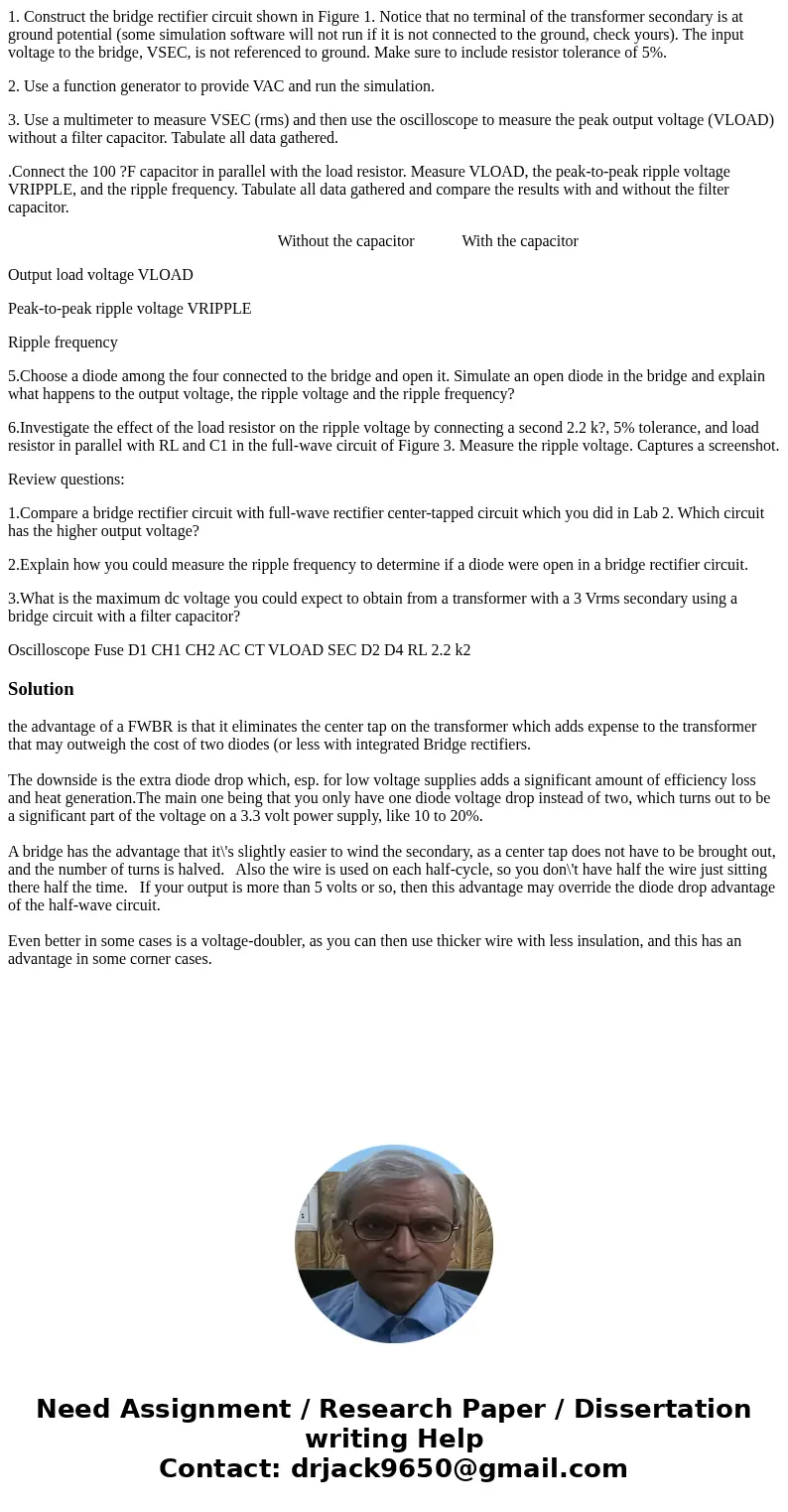1 Construct the bridge rectifier circuit shown in Figure 1 N
1. Construct the bridge rectifier circuit shown in Figure 1. Notice that no terminal of the transformer secondary is at ground potential (some simulation software will not run if it is not connected to the ground, check yours). The input voltage to the bridge, VSEC, is not referenced to ground. Make sure to include resistor tolerance of 5%.
2. Use a function generator to provide VAC and run the simulation.
3. Use a multimeter to measure VSEC (rms) and then use the oscilloscope to measure the peak output voltage (VLOAD) without a filter capacitor. Tabulate all data gathered.
.Connect the 100 ?F capacitor in parallel with the load resistor. Measure VLOAD, the peak-to-peak ripple voltage VRIPPLE, and the ripple frequency. Tabulate all data gathered and compare the results with and without the filter capacitor.
Without the capacitor With the capacitor
Output load voltage VLOAD
Peak-to-peak ripple voltage VRIPPLE
Ripple frequency
5.Choose a diode among the four connected to the bridge and open it. Simulate an open diode in the bridge and explain what happens to the output voltage, the ripple voltage and the ripple frequency?
6.Investigate the effect of the load resistor on the ripple voltage by connecting a second 2.2 k?, 5% tolerance, and load resistor in parallel with RL and C1 in the full-wave circuit of Figure 3. Measure the ripple voltage. Captures a screenshot.
Review questions:
1.Compare a bridge rectifier circuit with full-wave rectifier center-tapped circuit which you did in Lab 2. Which circuit has the higher output voltage?
2.Explain how you could measure the ripple frequency to determine if a diode were open in a bridge rectifier circuit.
3.What is the maximum dc voltage you could expect to obtain from a transformer with a 3 Vrms secondary using a bridge circuit with a filter capacitor?
Oscilloscope Fuse D1 CH1 CH2 AC CT VLOAD SEC D2 D4 RL 2.2 k2Solution
the advantage of a FWBR is that it eliminates the center tap on the transformer which adds expense to the transformer that may outweigh the cost of two diodes (or less with integrated Bridge rectifiers.
The downside is the extra diode drop which, esp. for low voltage supplies adds a significant amount of efficiency loss and heat generation.The main one being that you only have one diode voltage drop instead of two, which turns out to be a significant part of the voltage on a 3.3 volt power supply, like 10 to 20%.
A bridge has the advantage that it\'s slightly easier to wind the secondary, as a center tap does not have to be brought out, and the number of turns is halved. Also the wire is used on each half-cycle, so you don\'t have half the wire just sitting there half the time. If your output is more than 5 volts or so, then this advantage may override the diode drop advantage of the half-wave circuit.
Even better in some cases is a voltage-doubler, as you can then use thicker wire with less insulation, and this has an advantage in some corner cases.

 Homework Sourse
Homework Sourse